Love beyond Boundaries: Subjectivity and Sexuality through Bhawaiya Folk Song of Bengal

Bhawaiya, a genre of Bangla folk songs, emerged within the Rajbangshi community of North Bengal, becoming famous for expressing the (often sensual) desires of women. Performed by both men and women, Bhawaiya lyrics detail youthful and non/extra-marital desire, often in contrast with oppressive marital circumstances. Bhawaiya's subversion unsettles the heteronormative gender roles that emerged in colonial Bengal. The ideal of "respectable" Bengali women was central to Bengali nationalism, countering colonial tropes of backward customs and female oppression. Bengali nationalist narratives strove to create a homogeneous domestic model reflecting nineteenth-century British domestic norms of puritan/motherly new Bengali women and stern patriarchs. Non-normative social and domestic practices were excluded from middle-class Bengali society. Bhawaiya nonetheless retained its appeal until now within the norms of Bengali society, despite its explicit language of female sexual desire.
The first Bhawaiya lyrics were published by George Grierson as the example of Rajbangshi dialect for the Linguistic Survey of India in 1904. The song is about a young girl who wants to get married for the fulfilment of her sexual desire. His translation of the lyrics goes:
At dawning youth I was not by Hymen favoured/ How long still am I to remain single at home/ O fate marble-hearted!The full-blown flower of my golden youth yields to Malaya's softest breeze/ My parents have become my foes in not sending me to another's home bound in ties hymeneal, / O fate marble-hearted
My heart cannot open to my father for shame, my mother I cannot press by maidenly modesty bound/Slowly is love consuming my frame as fire within chaff/ O fate marble-hearted! […] Stain who will my name, aught do I not care? To the fill of my heart will I enjoy the time in my love's sweet company. O fate marble hearted.
The song lyrics describe the sensual desire of the woman as newly blossoming. Grierson translates biya (marriage) as "hymen" to accentuate the sexual connotation of the lyrics, although the word "marriage" here equally upholds the connotation of sexual union to the native Bangla speakers. This theme is one of the most common trends of Bhawaiya:
O dear, to whom I will tell the story of my sorrow/ Who would have empathy for me? My parents married me to a crazy man/ The scorns of my in-laws are making me sick/ The crazy husband stays home, but never even touches my pillow/ O dear, I was cooking while you were playing the flute/ Smoke covered the sky as I set fire to the damp wood. (Song collected from fieldwork and translated by myself)
In these lyrics, the sexually frustrated subject desires her lover (the flute player), transgressing marriage and chaste female norms. "Biya" or marriage is a common theme of the lyrics of Bhawaiya songs, but the meaning of it is flexible. In some lyrics, it clearly indicates sexual fulfilment, in others it refers to marital oppression, depending on the relationship with the husband and lovers. Extra-marital desires are usually justified by the female subjects because of their oppressive or sexually unfulfilling husbands. Anam (not his real name), one of my research participants, explained that Bhawaiya is the only genre where illicit affairs are not judged by the singers and listeners. Transgressive or not, these sensual passions are framed as transcending sexual normativity. Crossing monogamous marriage in these songs is less of a moral dilemma than a social obstacle.
Around the same time as the emergence of Bhawaiya (the late 19th century), terms like polygamy and adultery were emerging in mainstream discourse in the context of British colonialism. British colonialism was partly predicated on orientalist depictions of India's cruelty to women. Bengali nationalism responded to these depictions by remodelling gender norms to reflect idealised Victorian domesticity and banish the trope of Indian women as "victims". This historical process constructs a specific image of decent and sacrificing "Bengali women" centering around images of motherhood. Moreover, the honourable Muslim mother image of Bengali women was free of sexuality. In short, the "new Bengali woman" was chaste, domestic, and devoted to her family and husband. Not only did this reformulation of womanhood de-personalise and de-sex women, it aimed to replace the multiplicity of sexual practices across Bengal with institutionalised, standardised norms.
The "new women" of this class disassociated from the popular nineteenth-century folk cultural products like doggerels, poems, proverbs, and songs. Tanika Sarkar shows that in the last half of the nineteenth century the emergent "public sphere" expanded to include the lower class, through the huge numbers of cheap Bengali publications. She argues that "adultery" became the "other" of Hindu conjugal sexuality. Although she shows the resisting voices of women against child marriage in various middle-class women's writings, the issue of "adultery" remains the unspoken taboo for the women in the formal discourse. If we consider "adultery" as the "other" of marriage, then it has no function other than to strengthen the "self": marriage. However, the adulterous desire expressed through women's voices has agency symbolically existing in the Bhawaiya lyrics, and not morally dissmissed by its performances. It shows a different narrative of "adultery" that is not as the "other" of marriage, but which transgresses its norms. I want to augment Sarkar's depiction of the Bengali "public sphere" by situating Bhawaiya lyrics and female desire for "illicit" relations in the blind spot of that public sphere, where the emotions of love with its sensuality were not scrutinised for their illicitness.

Marital and sexual customs that fell outside these new boundaries were banished to fringes of respectable Bengali society. The area where the Bhawaiya song emerged is Kamrupa, traditionally a centre of devotion to Kamdev Madan (Madan, the God of sex). According to Sukhabilasha Barma, that is the reason why "sex-oriented love, and not the unworldly heavenly love, has been deeply rooted in the songs of this area". While marginalised from respectable moral Bengali discourse and disassociated from the idea of "new women", sexual expression continued to exist through Bhawaiya and its reproduction in the middle-class/elite musicians with semi-respectability in the early twentieth century. Although the woman speaker/ subject of the songs is subaltern, her expression of desire enables her to transgress the boundary between the lower class and the upper class through the popularity of the songs among prominent elite musicians.
Rabindranath Tagore, the most important literary guru of Bangla, was also influenced by Bangla folk music. Tagore's songs, which culturally dominated Bangla music for almost a century, were influenced by the Baul genre of folk music. While he was promoting Baul music in his institution, the other legendary poet and songwriter of East Bengal, Kazi Nazrul Islam, became fond of Bhawaiya and Bhatiali folk music. Bangla folk music began to be adored by mainstream Bangla musicians and audiences, and soon recordings were being made for gramophone records. In this form, in the twentieth century, the Bhawaiya crossed over into the living rooms of the elites, carrying with it, its attitudes to female desire.
Existence on the Border
I argue that female subjectivity in Bhawaiya and its sexual subversive desire could exist because of the ambiguity of Bhawaiya's location between borders. Political or cultural/religious/linguistic borders are important in understanding the "location" of Bhawaiya and its subversive emergence. Bhawaiya is one of the main cultural signifiers of North Bengal. "North Bengal" cannot be found on the maps of Bangladesh or India but it still exists in Bengali topography. "North Bengal", like its main cultural product— the Bhawaiya musical tradition— transcends the border between Indian and Bangladeshi North Bengal with an imagined geographical community.
There are many stories and disputes about the origin of the Bhawaiya which are part of the debates about the identity politics of language and culture of the area. However, Cooch Behar is generally accepted as the genre's place of origin, by both its residents and most Bhawaiya researchers. It has a historical context of being situated in the blurred political and cultural border between Bengal and Rajbangshi, between Muslim and Hindu communities, between the British Raj and Hindu kingdom. From 1947 to the present, the whole Bhawaiya area has been divided by the international border between Bangladesh and India.
Voice and Authorship of the Lyrics
When I was discussing authorship with the participants, initially most of them said that the creators of the songs were mostly men. Nihar Barua from Assam, a key ethnomusicologist of the early-twentieth century, offers a contrasting interpretation, which was quite different from this assumption. Nihar* was one of the first self-taught ethnomusicologists from the prestigious Jamindar family. For her, it was the village poets who were able to bridge the gap between men and women and brought out the most secret and passionate desires of women. The poets from whom she collected those songs were both men and women. According to Nihar, the poets who devised the songs were "psychologists" who could understand and express female desire (in Bangla, joibon, which refers to desire with a strong sexual connotation). Joibon here is expressed as the erotic form of matured womanhood that is difficult to repress. Nihar gives one female poet's song as an example:
How can I repress (tie up) my new lusty youth? It's neither gold, nor silver that I can make into a necklace to wear on my neck. It's neither money, nor penny that I put into the locker. It's neither gem, nor jewel that I tie up in the anchol.
This sentiment is central to Bhawaiya. According to Nihar, the songs are created (written is not the correct term, as the poets were not literate) by both male and female poets. Although the lives of men and women were different because of the coercive patriarchal systems, the songs came from the poets who transcended gender with compassion, expressing the feelings of women as sexual subjects rather than male objects of desire. The characteristics of Bhawaiya tradition contribute more than the individual author. Therefore, it is more collective than individual.
Bhawaiyya as a Sphere of Women's Agency
Lyrics about female desire and sexuality in Bhawaiya do not automatically create a space for women as agents of their own sexuality. There is a clear gap between what acceptable desire is in a women's real life and what is acceptable in the fictional context of the song. For Bhawaiya performers, discussing their own sexuality is not acceptable in formal discussion. When conducting interviews, in keeping with the social norm of a good woman, I did not even bring up the topic. Most of the interview participants avoided drawing connections between the lyrical expression of love and their own experiences.
However, I wanted to examine whether the lyrics are a form through which these women can voice their emotions. Although the majority of contemporary songwriters are male, many of the female singers write their own songs, despite receiving little recognition as songwriters. In spite of this, their agency and satisfaction at being able to express their words through the songs were clear. For example, Laila, a middle-aged female singer, continues to sing despite strong opposition from her husband. While taking me to her room where she sings and writes, she told me: "Let me introduce you to my closest friend: this harmonium. I talk with it in the language of my soul". She did not give me the permission to record her interview and songs, but gave me her published poetry book, where according to her, she wrote about her passion, in her own voice. She also played me some songs that she wrote, full of rage, sorrow and desperation. She amazed me with her strong will and ability to transcend the borders imposed upon her by social norms.
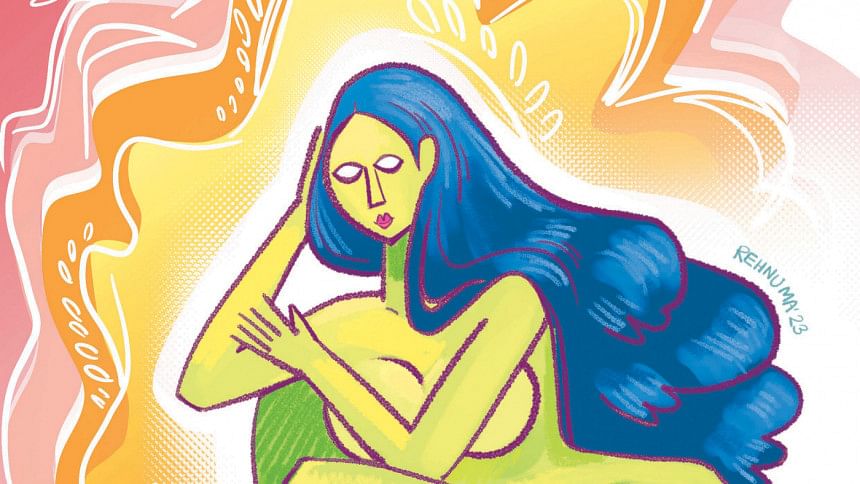
In the interviews, the responses and reactions of female singers and song writers vary when asked how they connect lyrics with their own lives. Some expressed their sufferings and struggles as singers, and some did not. A subtle, "silent" agreement of the difficulties that they are facing and struggling with, was evident. However, the idea of the subjugation of women in the past, when the lyrics were written, was commonly agreed upon.
When I explained to informants the focus of my research was female passion, feelings, desires, they often translated this as "sufferings of women". It was common to depict women as victims of the social system without mentioning patriarchy, especially from the middle-class, formally educated male informants. The "subjugation of women" trope is present in the formal conversation of the interviews with this group of informants. But it is depicted as something "out there", in an abstract form, never presented as connected to their lives. Maloti, the newly married singer living with her mother in-law and husband, spoke about how she is treated by everyone with respect as she never performs songs that are socially inappropriate, thus upholding social norms and her role as a "respectable woman". However, her role changed once her husband left the room, leaving us alone together. Upon discovering that I was divorced, she suggested that I should get a new man in my life. "Why should women have to suffer to uphold the image of the good woman? You are young and pretty, why would you waste it?" This formal to informal code-switching illustrates her conscious performance as a "good woman" while also questioning it when appropriate.
Maloti did not connect her life with the song lyrics, but for her, performing the songs meant performing the voice and stories of the characters of the songs. The "being the woman" of the song became visible when she was explaining her thoughts on the meaning of the songs and performance. For Maloti, the women in the songs are not so far from her own self: "If the story doesn't match mine, I imagine someone I know, with this type of story and go there, and become them." The sufferings, despair or desire of the women in songs are common to her and easy to relate to.
This inter-discursive situation of overlapping interview and performance showed not only the performing of the self in specific social situations, but showed the kind of situation from which subversion can be forged. Female agency is absent from the "suffering woman" trope, but agency, sometimes very conscious and shared, sometimes subtle, is present and salient to the middle and lower middle-class female singers. Being "good women" is central to their self-representation, assuming the generalised discourse of subjugation of women, while subtly trying to transcend it. This can be examined though Saba Mahmood's conceptualisation of agency as not just the ability to subvert patriarchal norms, but also in which women work to become willing subjects to negotiate the historical and cultural situation through which a subject is formed. This is where I see the formation of subjectivity negotiating with patriarchal norms. For Maloti, her agency meant accommodating social norms, while retaining the wish to transcend them.
Performers becoming the women of the songs was clearly visible in two performances that I recorded, where the singers started to cry by leaning on the sorrow of the women. In the first case, it was a female singer and in the second case, it was a male singer who began weeping along with his accompanying musicians. The respondents explain that weeping while performing the songs is a very common occurrence.
In the first case, the performer was Asha, a once-famous singer who has lived a dramatic life of success and tragic failure. She is currently living in extreme poverty with her husband. The first day I went to meet her while she was practicing music in a neighbour's house with her husband, who is a songwriter and plays the "dotara", a vital instrument for Bhawaiya. She cannot practice music in her own home, as she cannot afford the harmonium and her sons do not like her to play for Islamic religious reasons. While performing a song about a departed female lover, she wept and her voice trembled with emotion. The song concerned a woman who was unable to rid herself of the maya (illusionary, worldly love and passion) for her lover. She expressed her suffering and urged her lover to come to see her dead body, as she was now living out her last days. The other respondent, Amin, who brought me to her, was also crying at that time and explained to me later that, it is impossible for Asha not to cry while performing, as her life is very similar to the lives of the women in the Bhawaiya songs. The details of Asha's tragic life became clear in the second interview. Being a member of a religious minority, being stubborn and passionate, and following her heart were identified by Amin as the causes of her tragedy.

Asha herself is the iconic woman represented in Bhawaiya: passionate and stubborn, who tried to negotiate with the gendered norms of "womanhood". Her life story expressed by her and by others seems to show her strong will to negate the social norms too. Being a Muslim girl, she became accepted in the society by singing gazal (considered the high standard of music of the Islamic sufi tradition), but she became popular as a Bhawaiya singer, and most of her popular songs express the sensual desires of women. However, when she was at the height of her popularity, she fell in love with a songwriter and Dotara player and married him against the will of her family. This was the beginning of tragedy in her life. From that point on, while enduring fierce enmity from all of her family members, she struggled to be with the love of her life and also tried to continue singing. Asha does not speak much, but her moody, proud and passionate expression is very significant. She is a woman who did not compromise her passion. This caused suffering and poverty, but she remains dedicated to her musical expression. Her agony is expressed in the song performance and coincides with the "suffering" image of women, but she also transcends it with her agency.
In the second case, I went to an establishment similar to an orphanage in which children were being trained as folk singers. The organisation is run by the Bhawaiya singer Badol and funded by some Norwegian artists. The children live in an extension of Badol's house, which also contains a studio. After the interview, three female children, sat together in the studio with the musicians and songwriters of the organisation for their regular practice session. They all sang and were expecting me to record their songs. Badol performed last, and during his performance tears came from his eyes. In the song, the female protagonist is lamenting to an elderly woman that her husband has married a second wife and brought her into their home. Before beginning the performance, he explained the story of the song, which concerned child marriage and the polygamy of men, and how it was and still remains an exploitative situation for women. While performing the song, he wept, performing as her, and feeling the sorrow that she feels.
I wanted to examine the performance of the man becoming a "suffering woman". For these two cases, I locate the possibilities of agency in the constitutive performativity by the reiteration of gender norms. If gender is a performing act that we "put on, invariably, under constraint, daily and incessantly, with anxiety and pleasure", the deviance from the normative gender role in a performative act can be understood as a subversion of these norms. Here, the man performing a woman's song carries this subversive possibility. This process can be seen as "becoming woman", by the idea of "becoming" of Deleuze appropriated by Rosi Braidotti, as the process of constructing multiple subjectivities through it. For her, "the reference to 'woman' in the process of 'becoming-woman', does not refer to empirical females, but rather to socio-symbolic constructions' and 'on the other hand, the becoming-woman is a fundamental step in the process of becoming, for both sexes." Therefore, this notion of becoming woman through musical performance can be considered a first step towards the construction of temporal female subjectivity. In an atmosphere created by the temporal emotions felt by women, I experience that process of becoming-woman for both sexes, transcending the border of male/female binary by internalising the female musical emotions. That experience of "becoming-woman" shows a process of constructing female subjectitvity that is neither bound to the individual female body, nor the fixed sexual orientation. It is created by the emotional atmosphere inscribed in the songs.
Borders and margins demarcate and define normativity, but being between borders potentially subverts this norm. Bhawaiya, produced and reproduced by both men and women, bears the elements of subverting Bengali gender norms. This folk musical genre can merge both men and women in an atmosphere that transcends biological limits and combines a collective emotion of female subject. As the women in the Bhawaiya lyrics express sexual desire, sorrow, rage and resistance, contemporary female Bhawaiya singers also use it to voice their agency in negotiating patriarchy. Emerging in the margins of a new Bengali patriarchal public sphere, Bhawaiya's mobility between the border and social centre enable the popularisation of lyrical "illicit" passion. By crossing the geographical, linguistic, cultural, and gendered borders, its liminal existence nurtures this subversive feminine subject. I believe that this feminine subject has the potential to construct the temporal feminist subjectivity that crosses the individual and gendered body/mind binary with collective emotions of love.
*All the names of the people mentioned have been changed to protect the identities of the persons interviewed.
Nasrin Khandoker is Postdoctoral Researcher, University of Limerick, Ireland.

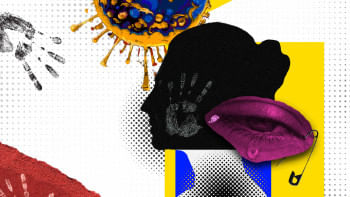
 For all latest news, follow The Daily Star's Google News channel.
For all latest news, follow The Daily Star's Google News channel. 
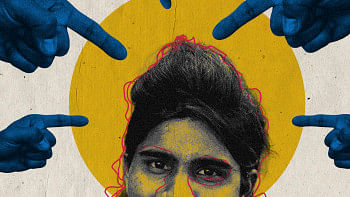

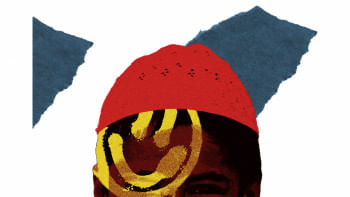




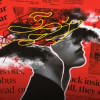



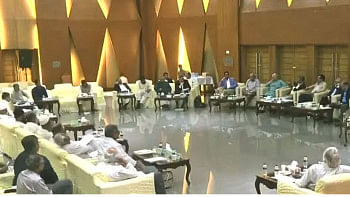
Comments